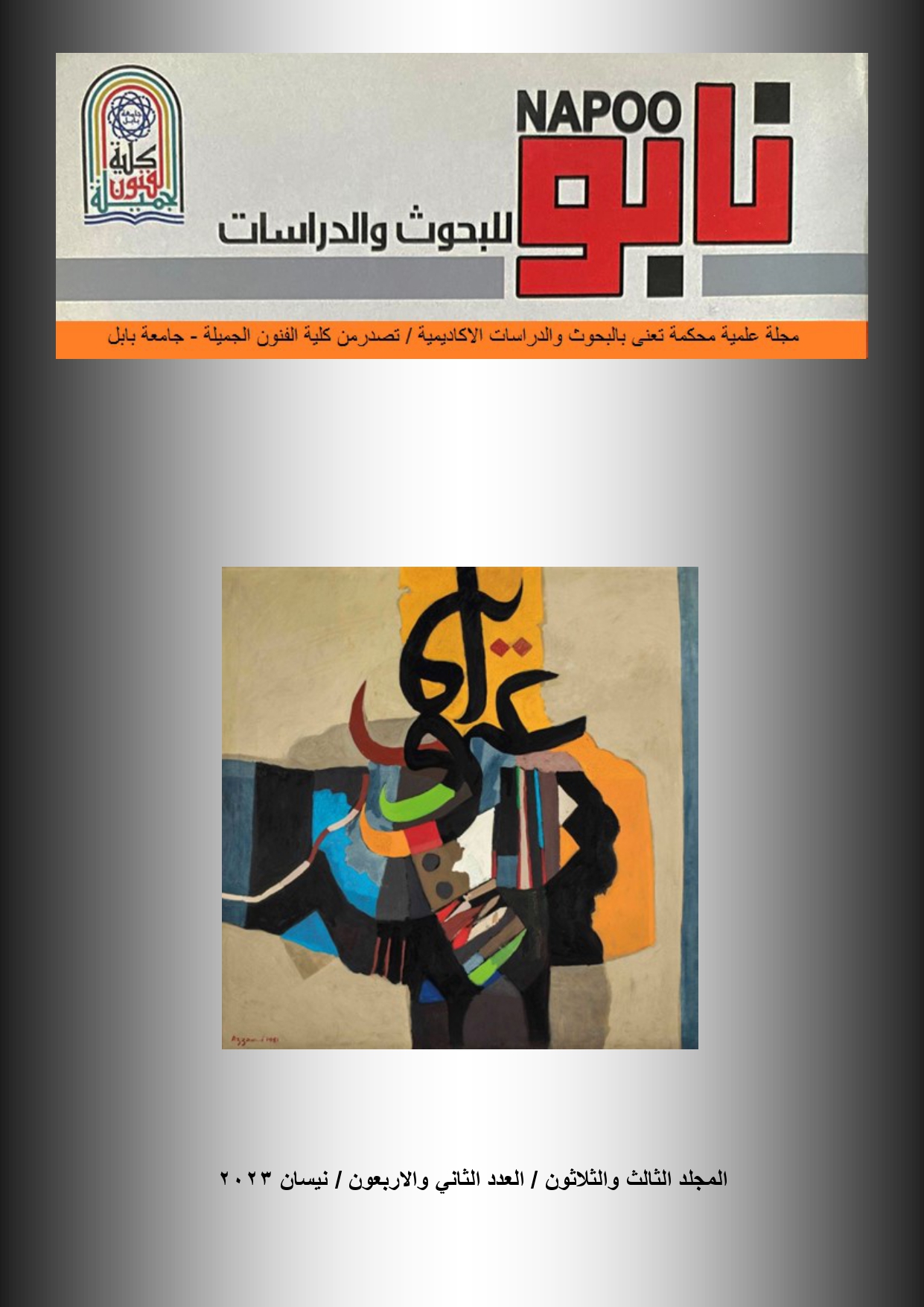تقابل الأشكال الموظفة في النحت العراقي القديم
الملخص
ملخص البحث :-
تناول البحث الحالي تقابل الأشكال الموظفة في النحت العراقي القديم اذ اهتم بدراسة المنجز الفني للأعمال في بلاد الرافدين فتم دراسة تقابلاتها الشكلية على اعتبار ان نصوصها تكونت من خلال العلاقة ما بين الشخوص في العمل النحتي وبالأخص الاعمال الجدارية فكانت مشكلة البحث تبحث من خلال التعالقات التواصلية مع كل مفاصل الوجود وحيثياته، فالبحث في ماهية الشيء هو الغور الى اعماق تشكله وجوهره وحقيقة نشؤه الذاتي، واطاره النظري بحث في مفهوم التقابل فكريا وبما يتعلق بالبنيات المكونة لمظاهر وأشياء الوجود عامة (مفردات وجزئيات الحياة والفكر عموما), تطرق الباحث الى مفهوم الشكل وتمثلاته في الفن فالشكل يعد "الهيئة الحسية للمواد" والمؤلفة من نظام من العلاقات الحسية للعناصر الشكلية التي تتصف بها تلك الهيئة, . وقد جسدت هذه الأعمال الفنية القيمة الفكرية والنظام الاجتماعي والموروث الحضاري والمعتقد الديني وحدود زمنية من (4000-650) ق. م ضمن حدودها المكانية شمال ووسط وجنوب العراق بأشكال فنية ذات دلالات فكرية بما يتفق والبناء الفكري. كما تناول الفصل الثالث اجراءات البحث من مجتمع البحث وتحليل العينات المختارة من المنحوتات في بلاد الرافدين بطريقة قصدية البالغة ثلاثة اعمال ضمن حدود البحث الموضوعية والزمانية والمكانية, وختم البحث بالفصل الرابع مبينا أهم نتائجه :
- اعتمد النحات العراقي القديم في بلاد الرافدين على توظيف الاشكال بطريقة تقابلية انسجمت مع طبيعة الفن العراقي القديم عموما ، من خلال محاكاة الواقع الاجتماعي والجماهيري المعاش بعد أن تعمد هذا الفن تمثيل مقتطفات من حياة العامة من الناس وما يعتريها من مشاكل وأزمات والطابع العسكري والسياسي وما هي مكانة الملوك والجنود والقادة العسكرين .
- حملت الاعمال النحتية سمات التعبير الشكلي التقابلي والذي انسجم مع الطابع الروحي والشكل العام الذي كان سائدا في تجسيد (الالهة , والملك , والقائد العسكري , وباقي طبقات المجتمع .......الخ) ، فهي اذن قبل أن تدخل في تجسيد العمل الفني تحضا بقبول الذائقة العامة ، فوجد فيها الفنان وسيلته لتجسيد شخصيات مهمة و محببة ومرغوبة لدى المجتمع السائد آنذاك ، مكنها هذا من أن تكون وسيلة اعلامية تحقق الغايات الفخر الانتصار والدعائية الجمالية والفنية في الوقت ذاته .
واستنتاجاته.
- تمكنت الاعمال النحتية من أن تستدعي طبيعة الفن العراقي القديم لتمثل سردا لمعطى واقعي واجتماعي يمثل حياة الالهة والكهنة والملوك والعسكر وعامة الناس بمختلف طباقتهم ودورهم في المجتمع .
الكلمات الدالة: تقابل , الشكل , النحت العراقي القديم




